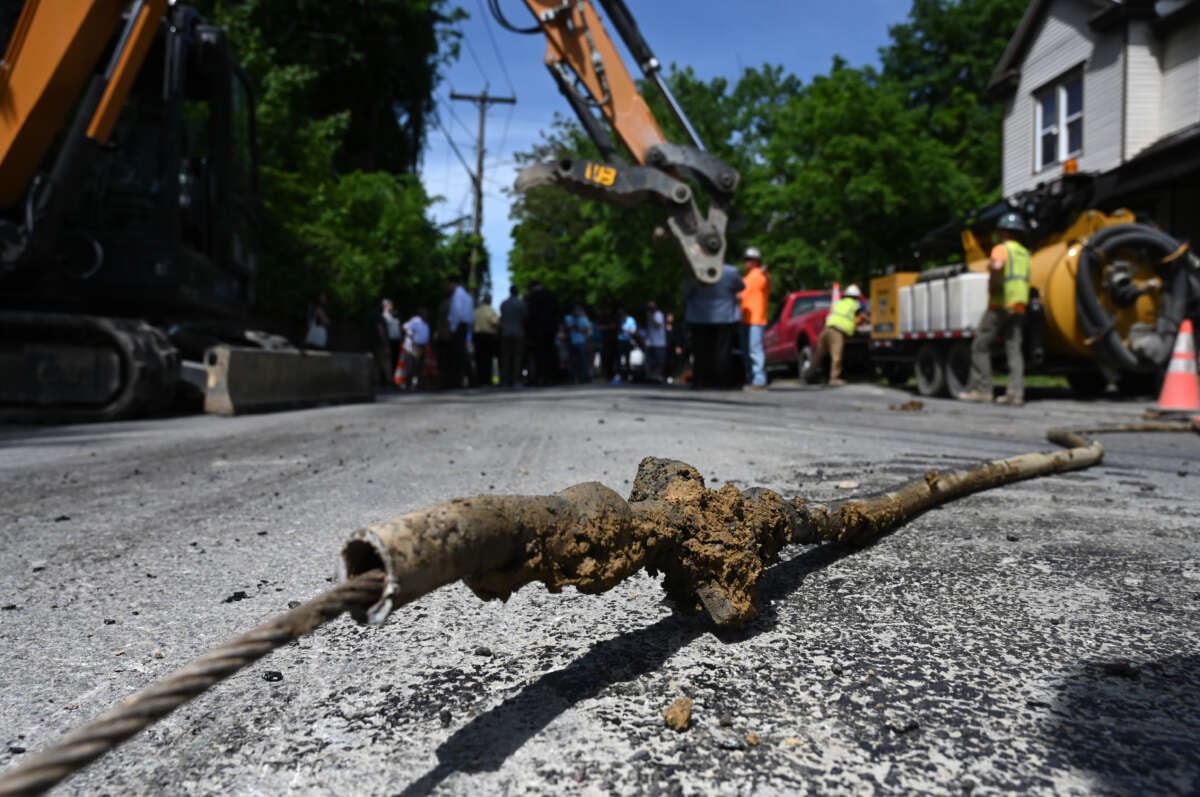On October 8, the Environmental Protection Agency (EPA) finalized a landmark rule aimed at tackling lead contamination in drinking water. Utility companies are now required to identify and replace their lead pipes within the next 10 years, the EPA announced, and the threshold for acceptable lead levels in drinking water has been lowered from 15 to 10 parts per billion — the strictest guidelines since federal regulations were first set in 1991.
The announcement was made alongside millions of dollars in additional funding for lead pipe replacement in Nebraska. Championed by President Joe Biden and Vice President Kamala Harris, the new EPA rule is certainly a crucial step in the right direction — but it has some glaring loopholes.
While environmental groups praised the mandate that utilities pay for lead pipe replacement, some noted that the rule does not include lines on private property, leaving homeowners to shoulder the cost. The Natural Resources Defense Council wrote in a press release that closing this loophole “is critical to avoiding the environmental injustices that result when utilities charge individual homeowners thousands of dollars to remove the lead pipes, leaving lower-income and disproportionately homeowners and renters of color continuing to drink lead.”
Lead contamination is already a public health crisis that disproportionately impacts Black, Latinx and low-income communities. In the high profile case of Flint, Michigan, a state of emergency was declared in 2015 after severe lead contamination was found in the drinking water of the majority-Black city’s 98,000 residents. Now, nearly 10 years later, pipe replacements are still ongoing. Lead exposure is linked to numerous adverse health outcomes, particularly in children, including irreversible brain and nervous system damage. Flint’s water was so toxic that additional testing determined it met EPA criteria for hazardous waste — but reports found that systemic racism slowed the government’s response to the crisis.
The EPA expressed concerns that a requirement to replace lead pipes on private property would face legal challenges. But in falling short of this requirement, the agency risks further entrenching the racial inequities that come with accessing clean drinking water.
Additionally, the new EPA rule does not specify what materials must be used to replace the lead pipes. The cheapest alternative is plastic, yet a growing body of concerning research shows that popular polyvinyl chloride (PVC) pipes can also leach toxic chemicals into the water.
An April 2023 report by the advocacy group Beyond Plastics, co-published with the nonprofits Environmental Health Sciences and the Plastic Pollution Coalition, noted that independent researchers have found as many as 50 different chemicals released into drinking water by PVC pipes, including hormone-disrupting organotin compounds and, potentially, phthalates. There is little research, regulation or data on this issue, however, as the EPA does not test for chemical releases from plastic pipes.
That means we often only find out about the risks of these chemicals in the midst of catastrophes. The risks of vinyl chloride, for instance, came to the fore last year when a Norfolk Southern train derailed in East Palestine, Ohio, releasing more than 1 million pounds of the known human carcinogen into the air and water. Vinyl chloride is a main ingredient in PVC, but EPA standards do not require testing tap water for the chemical.
PVC pipes are made using petrochemicals, which are derived from fossil fuels. And, pulling from the fossil fuel industry playbook, the PVC lobby has spent millions of dollars on efforts to convince lawmakers that the plastic is safe, including pushing to ensure that plastic pipes are included in water infrastructure considerations. These efforts are proving successful: Bluefield Research, a market research company focused on water, predicts that 80 percent of domestic water pipes will be made of plastic by 2030. Westlake Corporation, an international petrochemical manufacturer, plans to begin building a $134 million expansion to its PVC pipe plant in Wichita Falls, Texas, by the end of this year.
These plastic pipes will not alleviate environmental racism. PVC production also disproportionately harms people of color, releasing carcinogenic vinyl chloride, dioxins and other hazardous chemicals into predominantly low-income communities and communities of color. At least three communities founded by formerly enslaved people, all located in the petrochemical-heavy region of Louisiana known as Cancer Alley, have been “poisoned and abandoned as a result of vinyl chloride and plastic production,” according to the Ecology Center.
Given these gaps in the EPA’s new rule, environmental advocacy groups must — and will — continue pushing the Biden administration for stronger drinking water protections and expanded requirements and funding for lead pipe replacements on private property. Alternatives like copper and stainless steel are viable, and they would require more government investment.
“Although we strongly support the replacement of lead service lines, we need to know that the replacement piping material is safe,” Beyond Plastics founder and president, Judith Enck, wrote in an introduction to the 2023 report. Until we have better safeguards, Enck noted, “Communities that opt to replace their lead service lines with PVC plastic pipes may well be leaping from the frying pan into the fire.”
Media that fights fascism
Truthout is funded almost entirely by readers — that’s why we can speak truth to power and cut against the mainstream narrative. But independent journalists at Truthout face mounting political repression under Trump.
We rely on your support to survive McCarthyist censorship. Please make a tax-deductible one-time or monthly donation.
